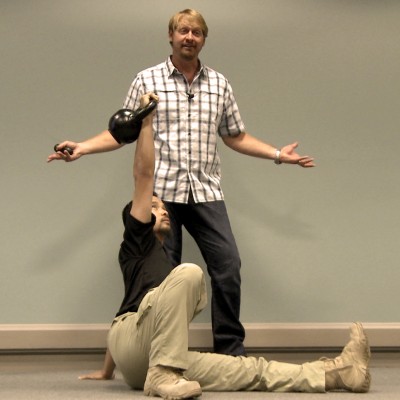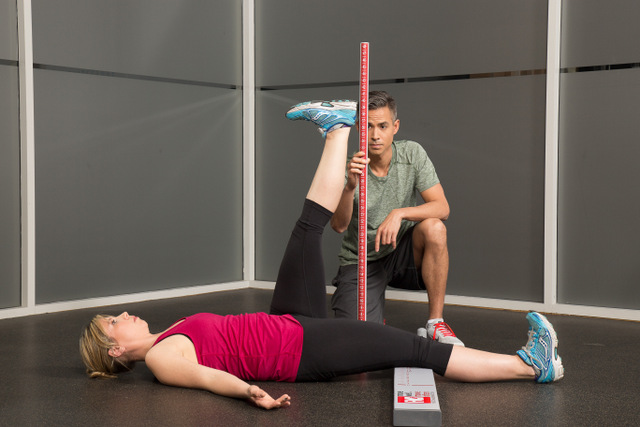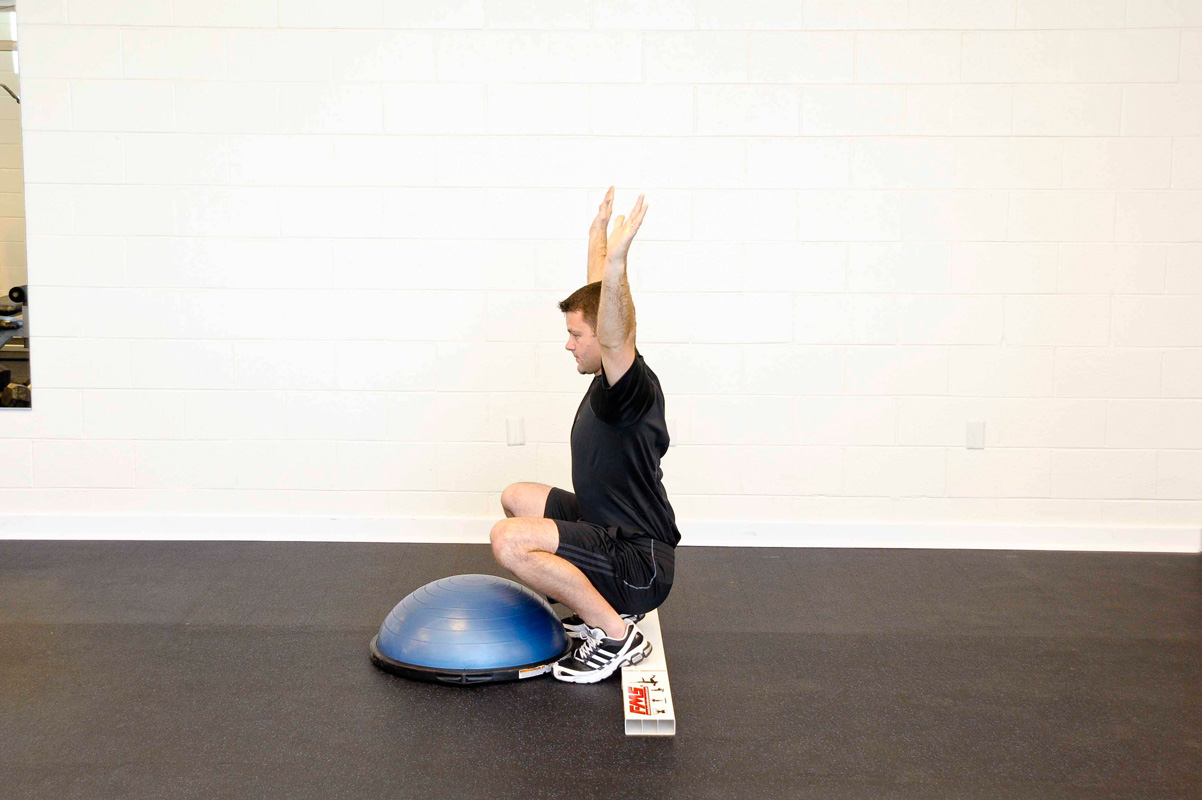FMS Programming - Addition by Subtraction
Written by Mike Deibler FMS
Addition by subtraction was something I first heard back in college. And no, it was not in a math class. When I ran track in college, this was a term I would hear my coach use at times.
It was amazing how many talented athletes would be dismissed from the team due to academic issues or behavior problems. These were kids on scholarship that had the talent to help us win not only meets but championships.
I may not have understood this at first, but it came to be crystal clear with the more time I spent with my team. At what cost was it to keep these athletes around? As talented as they may have been, how much could they potentially bring the rest of the team down with their actions and attitudes?
You probably want to know what on earth this has to do with movement screening and program design for your clients, right? Hopefully in the next few paragraphs, I will make this clear. 
When you first attend an FMS Level 1 course, it can be intimidating. You are learning all of this amazing information on how to help your clients, but you may still have questions on how you can write a better program with this new knowledge.
The great news is you do not have to throw away everything you have previously been doing. Instead, you are going to focus on adding the principles you have learned in the course. To help you get started I wanted to focus on the second principle. And really, just the first piece of it.
Protect, Correct, Develop
When trying to apply exercise and reach a client’s goal, we always have to start at the beginning and progress. We need to build upon previous skills learned. Improving movement is no exception. We must first protect the client from movement patterns they are not competent in before we correct and develop.
This is the very first step in program design and being able to apply this with your clients puts you in the top percentile among fitness professionals.
 There is a problem in the fitness industry, where individuals are convinced that more is better and higher intensity is the only key to success. While increasing load and intensity are sometimes the correct response, most skip steps and try and start there.
There is a problem in the fitness industry, where individuals are convinced that more is better and higher intensity is the only key to success. While increasing load and intensity are sometimes the correct response, most skip steps and try and start there.
This is evident by the number of people that need tape and wraps covering all their joints in order to workout.
This is where the addition by subtraction comes into play. By simply removing exercises or movements that clients are not yet competent in, we reduce putting them in positions that will likely be high risk. We can never prevent injuries, but by focusing on developing movements they do well and avoiding movements they do not we can dramatically reduce the chances of our clients being put in positions that potentially can cause issues.
Your first job is to remove exercises that pose a risk. By doing this one step you focus on training them in areas they currently have the capability of being successful in right away. This will lead to better improvements with fewer setbacks.
Just like teammates who would have poorly influenced my team, let’s just get rid of these exercises for the time being. Eventually, you will be skilled in moving on to correcting your client, but for now, let’s focus on protecting.
So, let’s put this into practice. Most likely, when you put together an exercise program, you use a template in some form. Many will focus on movement patterns and then fill in the specific exercise that will be completed. For our purposes let’s assume we are including a Squat, Hip Hinge, Lunge, Upper Body Push, and Upper Body Pull, for each workout.
Our example may include:
· KB Goblet Squats
· Overhead Press
· KB Deadlift
· DB Row
· Reverse Lunge
This may be a great starting point for many clients. But what if we look at a sample screen.

In this case, we just need to look at our program and start to adjust by removing any exercises that are contraindicated based on the score.
The Goblet Squat is still a good choice considering the score of 2. We see there are 1’s on the shoulder mobility screen so we do have an issue with the overhead press. Also, the score of 1 on the trunk stability push up will tell us to remove this exercise as well. The Deadlift is still on the table with an active straight leg raise score of 2’s. The DB Row is still appropriate, but with scores of 1’s on shoulder mobility, we will keep an eye on this. Finally, we had 1’s on the In-Line Lunge so we will remove the Reverse Lunges from the program.
So our new program would look something like this:
· KB Goblet Squat
· KB Deadlift
· DB Row
Now what? Well to start, this might be the program. We don’t necessarily have to add anything in. We have fewer movements to choose from, but we can spend extra time really developing these areas.
If you want to add more though you can. Just remember to always protect. Instead of worrying about how to correct certain movement patterns, you can add in more movements that are low risk but high return for the client.
Maybe your client has a goal of better-looking arms or fat loss. We can add bicep curls or tricep extensions for the arms. We can also add metabolic work like battling rope waves. Or maybe we choose another exercise in the same movement pattern. For example, in addition to deadlifts, we can add a bridging exercise or hamstring curl. These exercises would still be in line with the client’s goals and not breaking the protect principle.
Our new program now could look like this:
· KB Goblet Squats
· Cable Tricep Extension
· KB Deadlifts
· DB Row
· Battling Rope Alternating Waves
The purpose of adding a system, like the FMS, into your training plan is to make your life easier and make your training plans more effective. But anytime you add something new, it can be a challenge. By first focusing on protecting your client by simply removing certain exercises, it becomes a very easy way to use your screen results to develop a better program.
Once you have become comfortable with this first step you can start to explore not just what exercises to add but why you are adding them. This is exactly what you will learn in the FMS Level 2 course. But for now, keep it simple and create a better program through addition by subtraction.
Author

Mike Deibler is the owner of San Diego Premier Training, a multipurpose group and private training studio and rehab center located in Carlsbad, CA. Mike has used his education and experience to help design a fitness system to help clients learn how better movement leads to better results and quality of life. In addition to running his studio he is an instructor with Functional Movement Systems, Director of Education at Exercise Etc., an adjunct professor at Miramar College, and Obstacle Course Training Podcast Host. He is also a regular contributor to publications such as American Council on Exercise, Men’s Health, Women’s Health, Muscle and Fitness, Shape, Spartan Life, and Aaptiv.
Related Resources
-
No Moving Parts
Posted by Gray Cook
-
Why Move Well Week 1
Posted by Gray Cook
-
Training From the Ground Up
Posted by Chris Frankel
Please login to leave a comment
1 Comments
-
Ilir Gacaj 2/22/2021 4:26:06 PM
Simple and clear advice! Thanks, very usefull








